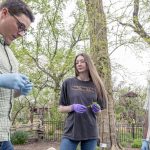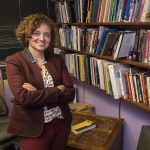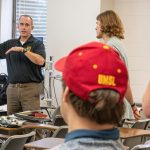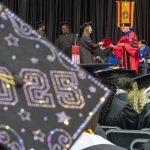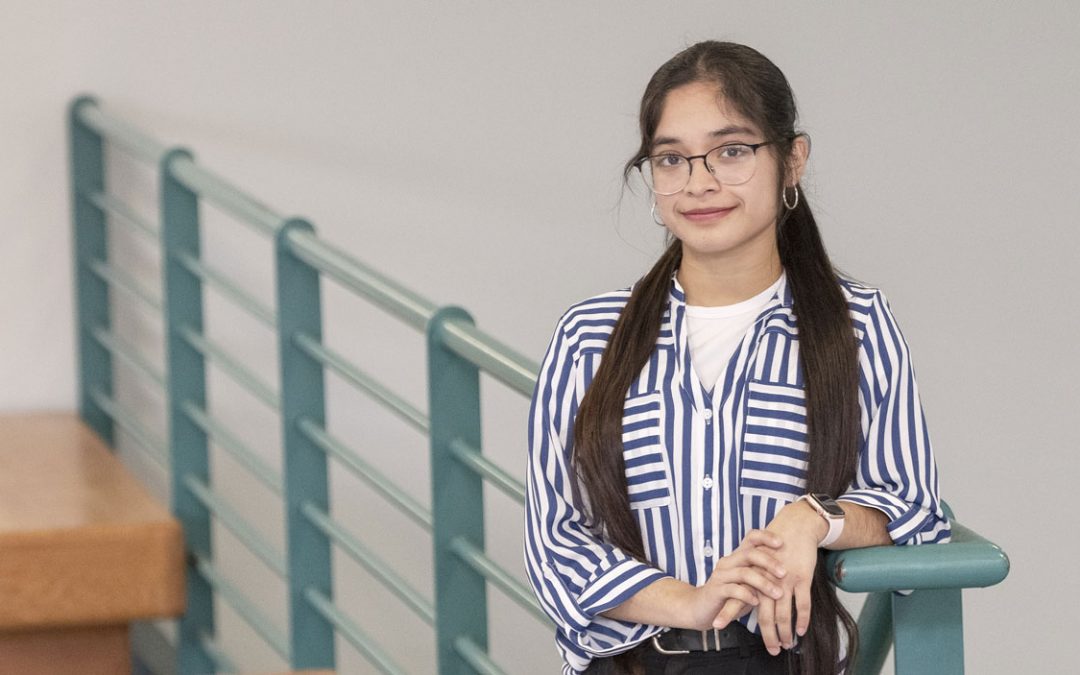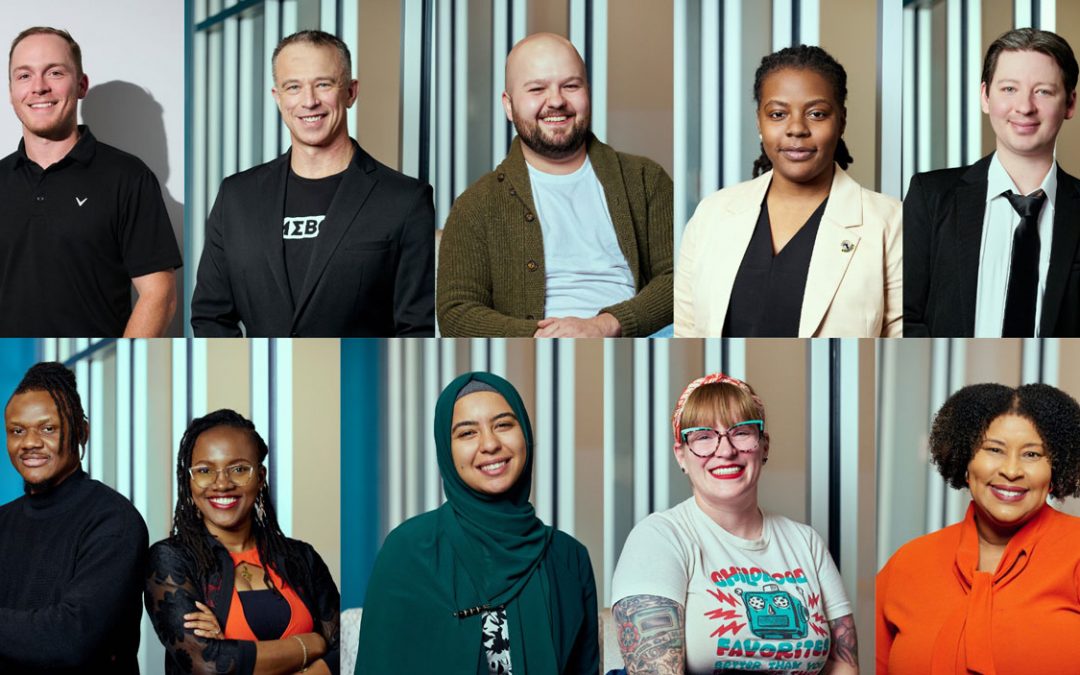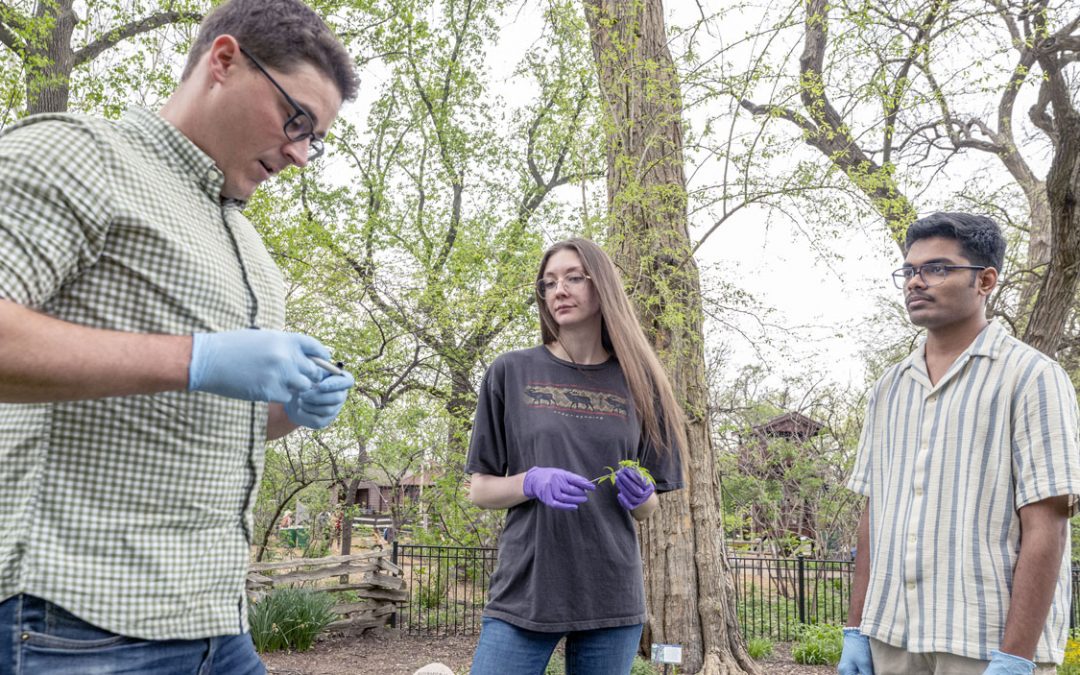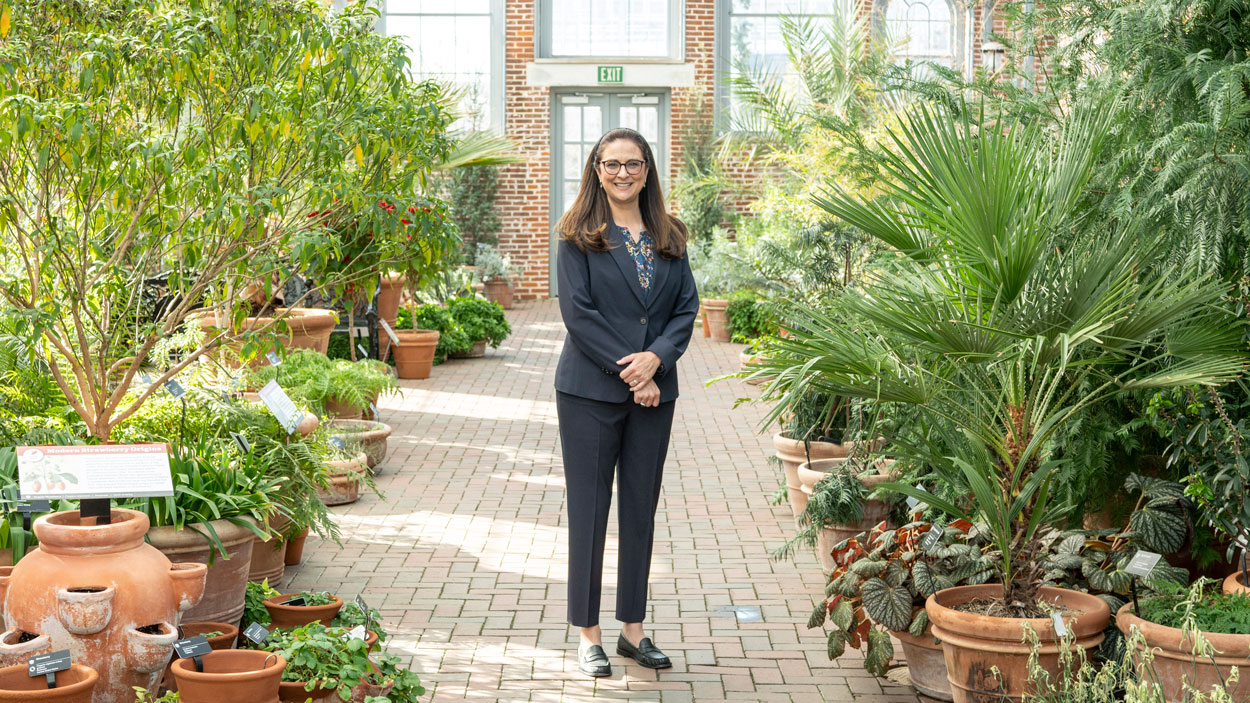
Alum Lúcia Lohmann begin serving as the president of the Missouri Botanical Garden in January. (Photos by Derik Holtmann)
Last November, about two months after Lúcia Lohmann was announced as the incoming president of the Missouri Botanical Garden, she brought her family from California to St. Louis for a weekend visit.
The trip marked the first chance she had to show her three teenage daughters around the 79 manicured acres that have since become her new “office.”
The visit was also filled with nostalgia because of all the memories Lohmann had of the city from her time as a graduate student pursuing her PhD in biology with an emphasis in ecology, evolution and systematics at the University of Missouri–St. Louis.
“I was always talking about St. Louis to my family,” Lohmann says. “Of course, it’s a topic that would always come up in conversation.”
But her twins had been in strollers and her youngest not yet born in 2009, when she made one of her last visits back to town. So, Lohmann took the opportunity in November to give them a tour of some of the places that helped define her experience two decades earlier.
She brought them by the Bayer Center where she would often work at the library or conduct research in the Herbarium long into the night; the Climatron, which provided her favorite escape whenever she was feeling homesick for her native Brazil; and her old apartment building near the intersection of Maury and Castleman Avenues, about two blocks west of the Garden’s main entrance.
In February, just over a month into her tenure, Lohmann hadn’t lost her sense of wonder at the opportunity she’s been given to come full circle, leading a world-class organization that played such a foundational role in her life and career.
“I would say the first month has been energizing,” she says while sitting in her corner office on the second floor of what was once Henry Shaw’s home along Tower Grove Avenue. “I was here at the Garden for nearly a decade, and coming back and seeing how much the Garden has grown and how dedicated everyone is has been truly heartwarming.”
Her task is straightforward: elevate the Garden, both as a cultural landmark in St. Louis and as a leader in science and conservation around the globe.
***
Even people who have strolled through the Garden’s lush grounds for decades might not fully understand the scale of the institution’s reach and impact in ecology and conservation across the world. But Lohmann does.
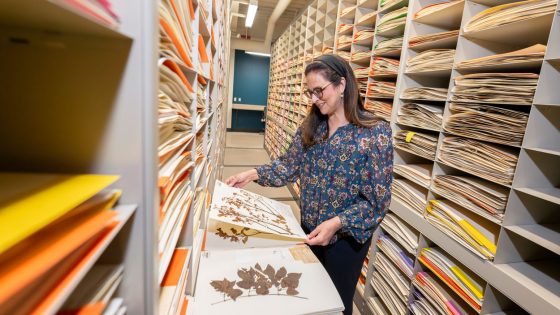
Lúcia Lohmann looks at a trumpet creeper specimen in the Herbarium at the Missouri Botanical Garden.
She grew up in Brazil in a family of university professors and teachers and first encountered the Missouri Botanical Garden as an undergraduate student at the Universidade de São Paulo while helping create the first field guide of plants of the central portions of the Amazon basin. She came to St. Louis to make use of the Garden’s famed Herbarium to try to identify different species of trumpet creeper vines, or Bignoniaceae.
“The Garden has the largest collection of that group,” says Lohmann, who majored in botany as an undergrad.
While in St. Louis, Lohmann met Mick Richardson, the Garden’s director of graduate studies, who told her about opportunities to conduct research there while pursuing a degree at one of the region’s universities.
Among them was UMSL, which several years earlier had launched the International Center for Tropical Ecology – now the Whitney R. Harris World Ecology Center – and had partnered with the Garden to bring aspiring scientists from around the world, particularly Latin America, to train in the Department of Biology. The university aligned with her interests.
“I loved that UMSL was so international, and there were students from all over the globe,” she says. “The center was doing a lot of research in the tropics and already had a truly global focus.”
UMSL wound up being the only graduate program to which she applied. A stellar student, she made sure to take advantage of everything the university had to offer – earning a master’s degree, a graduate certificate in tropical biology and conservation and, ultimately, her PhD.
“I always looked up to her,” says Noah Whiteman, now a professor of genetics, genomics, evolution and development at the University of California, Berkeley, who was in UMSL’s doctoral program with Lohmann and lived across the street from her on Castleman. “She was a couple years ahead of me and just a very intelligent, magnanimous colleague. Very warm, very worldly and a world expert in the Bignoniaceae. It seemed like she knew what she wanted to do, which was inspiring, too.”
Lohmann was still working on her master’s when she was asked to serve as the student representative on the hiring committee that brought noted husband and wife botanists Peter Stevens and Elizabeth “Toby” Kellogg to UMSL from Harvard University in 1998. Lohmann had been following their work in plant systematics for years and, as she transitioned to the PhD program, she became one of the first doctoral students to join their lab at UMSL.
She wound up writing her dissertation on phylogeny, classification, morphological diversification and biogeography of Bignonieae.
“She was a very talented person, very inquisitive with a great work ethic as a student,” says Kellogg, now a principal investigator at the Donald Danforth Plant Science Center. “She was a really great member of the team and did a lot of very interesting biology.”
***
After graduating with her PhD in 2003, Lohmann remained in St. Louis doing postdoctoral research at the Garden’s Center for Conservation and Sustainable Development. She continued to work on trumpet creepers while starting new research on the uses of Herbarium specimens to establish conservation priorities. While she looked at Latin America as a whole, she displayed a special interest in the Amazon Basin, a region that has remained very dear to her heart and central to her research since her early days as an undergraduate student in Brazil.
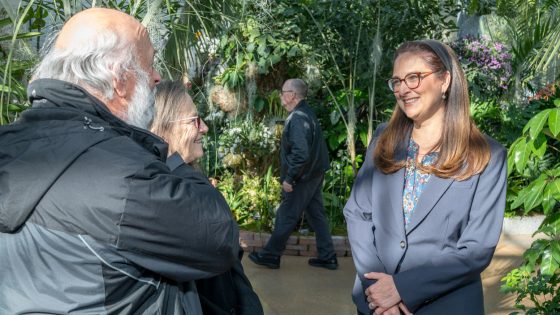
Missouri Botanical Garden President Lúcia Lohmann speaks to Washington, Missouri, residents Kevin Klein and Cathy Drapcho Klein during their visit to the garden earlier this year.
“How biodiversity was assembled in the Amazon basin over millions of years has intrigued me for a long time,” Lohmann says. “To understand such an old and complex region, we need to study the region’s biodiversity in light of its past geological and climatic history.”
In 2004, Lohmann landed a position as an assistant professor in the Department of Botany at the Universidade de São Paulo, her alma mater. As she climbed the academic ladder over the next two decades, she also spent significant time working in the Amazon, documenting its flora, studying its history and describing new species of trumpet creepers before they disappeared.
“I’m not sure everyone realizes that most species in the tropics don’t even have names yet,” she says. “We can only conserve what we know and care about. It’s important not only to name species, but also to understand their biology, how they formed and how so much diversity in terms of colors, shapes and smells came to life over millions of years. Understanding how species adapted to climate change in the past provides incredibly relevant information as we plan our future.”
Lohmann has always been conscious of trying to communicate her work in a way that reaches beyond the scientific community and connects with the general public and policymakers. To that end, she has taken artists, photographers and documentarians with her on field expeditions to the Amazon basin and been stimulated by the thought-provoking interactions that transpired.
She has trained 30 graduate students at the master’s and PhD levels and estimates she’s taught thousands of undergraduates about the importance of biodiversity. She is currently getting ready to close her tenure as the executive director of the Association for Tropical Biology and Conservation, and will continue to serve as the president of the International Association for Plant Taxonomy for several more years.
“These organizations pull together people from throughout the world,” Kellogg says. “They require a substantial administrative ability and energy to take on big administrative tasks at a global scale.”
***
Despite her nonprofit work, Lohmann still never imagined herself leading the Missouri Botanical Garden.
She had taken a new position at Berkeley in August 2023 – reconnecting with Whiteman in the process – and had no plans to leave California anytime soon. But that changed when she was mapproached about the possibility of replacing outgoing MOBOT President Peter Wyse Jackson.
“It was such a fantastic opportunity that I could not let go,” says Lohmann, who also received an appointment as the George Engelmann professor of botany at Washington University in St. Louis. “The opportunity of going back to St. Louis, which is a place that is deep in my heart, and lead an institution that promotes botany at a global scale was impossible to pass.”
Garden scientists conduct research and work to promote conservation in 35 countries across six continents. Information they gather on plant diversity is used to enhance planning and decision- making by policymakers around the world.
Lohmann’s background gave her a lot of familiarity with that work.
Since assuming her new position on Jan. 2, she’s had a chance to meet with local Garden staff and learn more about its public-facing role in education, sustainability and horticulture. She’s also witnessed the affinity people feel for the institution in St. Louis.
“Every person I meet has a story about the Garden,” Lohmann says. “It’s wonderful to hear stories from people who used to come here as kids and understand how the Garden helped shape the appreciation that the community of St. Louis has for plants, nature and the environment.”
As she begins setting the course for the next decade, Lohmann wants to ensure the Garden continues to serve that role for future generations of St. Louisans. She’s also eager to strengthen ties with local universities, including UMSL, as well as the region’s vibrant plant science sector.
“We’ll continue to do strong science,” she says. “We’ll continue to enrich people’s lives. But I would like the exact details of what we do to be co-constructed by the whole community. The Garden has a very important responsibility toward the community of St. Louis and the world, and the work it does is really meaningful for the future of humanity.”
This story was originally published in the spring 2025 issue of UMSL Magazine. If you have a story idea for UMSL Magazine, email magazine@umsl.edu.





